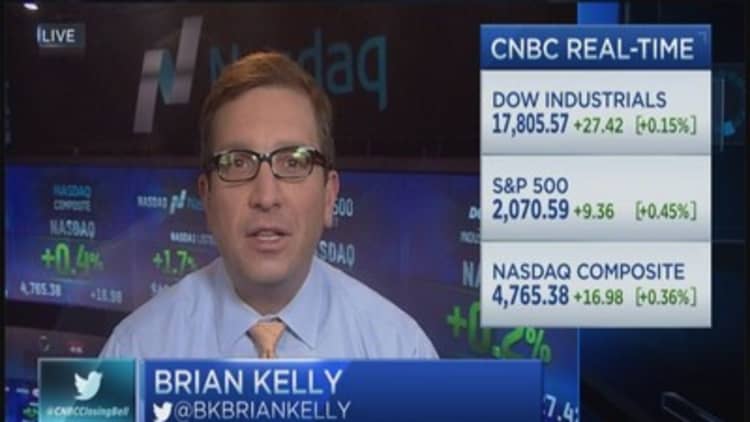
The dramatic drop in oil prices touches every U.S. industry: Energy production and refining, logistics and transportation, construction, retail and more. What's viewed as a negative for some energy-focused companies is, in turn, a positive for consumers filling up their tank.
That dynamic presents a double-edged sword for the banking industry, which will not only see higher costs but also huge benefits from the drop.
As the price of oil falls, energy production becomes less profitable and cash flow decreases, which analysts say will lead these companies to focus on cutting costs in response. If companies can't adjust fast enough, though, they could miss interest payments on loans or bonds—or could see their day-to-day operations constrained by the focus on servicing that debt.
Energy junk bonds now yield nearly 8 percentage points more than comparable Treasurys—compared to just 4 percentage points back in June before prices began tumbling. That's a signal that investors are repricing the risk of owning that debt.
Read MoreFor some states, cheap oil isn't such a good thing
Analysts have singled out a few banks that could be most exposed to this type of slowdown.
JPMorgan analyst Vivek Juneja writes that Wells Fargo appears the most exposed, since it has the highest portion of its business coming from the energy patch. In 2014, Wells Fargo syndicated $26.4 billion in leveraged oil and gas loans—the most of its peers and 27 percent of its total leveraged loans—and also underwrote $4.3 billion in high-yield bonds for oil and gas companies (26 percent of its high-yield business), and also higher than other banks.
To boot, Juneja said, Wells Fargo also gets the highest share of its investment banking fees from the sector compared to its rival banks—and much of that activity will stall due to market volatility and valuation.
Large-cap banks might be safeguarded by the fact that many of their oil and gas clients are also large cap and stable in nature. A note from Matthew Burnell at Wells Fargo (which does not cover itself), said that smaller, regional banks could see more exposure as prices remain volatile but that energy-focused regulation has kept their portfolios from growing too risky.
At Zions and Comerica, oil and gas loans make up 7.8 percent and 7.1 percent of total loans, respectively, but Burnell said even with this outsized exposure, losses should remain "manageable."

Juneja highlighted Regions Financial as another bank with around 8 percent of total loans sourced in the energy patch that could feel a pinch if defaults happen.
Geographically, smaller banks in Oklahoma, Texas and Louisiana will struggle in the near term, Jefferies said, highlighting Houston's Green Bancorp as one in this bucket.
Read MoreOil and the banks: As prices fall, risks may rise
There's a difference between banks hurting because they're losing new business and suffering losses due to a credit event that causes turmoil across the broader credit markets. Jefferies pins that sweet spot for crude between the mid-$70s and low $40s per barrel. Above the top of the range, banks will see clients in growth mode, but below the bottom of the range, credit gets called into question.
In the middle of that range, though, the benefits may outweigh the costs. Lower prices at the pump mean the average American will have more money in their pocket this holiday season. At a recent industry conference, Bank of America CEO Brian Moynihan said gas spending over the Thanksgiving holiday fell 14 percent. SunTrust CEO Bill Rogers said this holiday season, consumers see a benefit up to $1,500.
"It's essentially a refund," Rogers told CNBC. "That's going to have to impact consumer confidence."
Consumers may take out new auto loans, spend more on their debit and credit cards or pay off more of their mortgages with the extra money they have—providing some lift to the banks providing that service.

